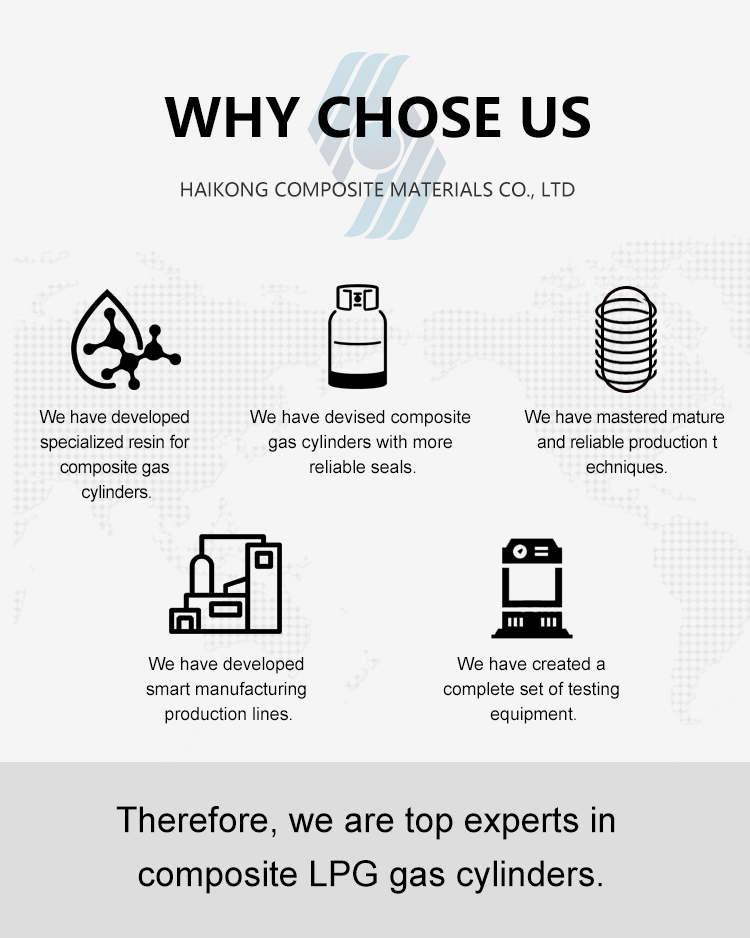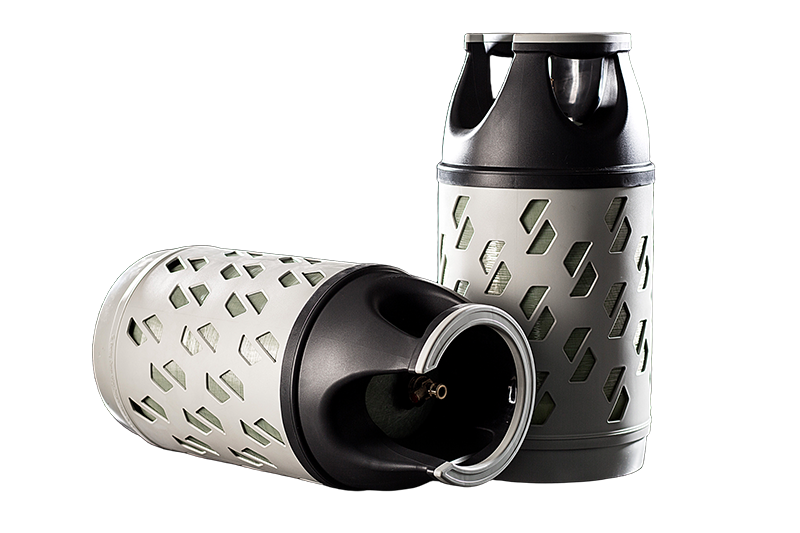1. Weight and Portability
Composite material cylinders are significantly lighter than traditional steel or aluminum cylinders. According to various studies, composite cylinders can be 30% to 70% lighter than traditional cylinders. For example, LPG composite cylinders are 60% lighter than traditional ones, and composite CNG cylinders are 1/3 to 2/3 lighter than steel cylinders under the same volume and pressure. This lightweight design improves handling and transportation, especially in medical, automotive, and industrial applications.
2. Safety and Durability
Composite cylinders offer superior safety and durability. They have excellent impact resistance, corrosion resistance, and fatigue resistance, reducing the risk of failure due to rust, corrosion, or impact. Additionally, composite cylinders do not produce dangerous fragments in the event of an impact, reducing the risk of injury or property damage. They also have a longer lifespan and lower maintenance costs.
3. Cost and Economics
Although composite cylinders have a higher initial cost, they offer better long-term economic benefits. The manufacturing process is complex, and materials like carbon fiber and glass fiber are expensive, leading to higher upfront costs. However, their lightweight, durability, and low maintenance costs make them more cost-effective in the long term. For example, non-limited-life (NLL) composite cylinders can last longer than traditional cylinders and do not require frequent replacement.
4. Applications and Market Trends
Composite cylinders are widely used in various fields, including automotive, medical, aerospace, and petrochemical industries. For example, in the automotive industry, composite CNG cylinders are replacing traditional steel cylinders to improve fuel efficiency and safety. In the medical field, lightweight composite cylinders improve the portability of portable oxygen equipment.
5. Challenges and Future Directions
Despite their advantages, composite cylinders face challenges such as complex manufacturing processes, high costs, and limited impact resistance in some cases. Improvements can be made by optimizing layup structures and material combinations.
Conclusion
Composite cylinders offer superior performance in weight, safety, durability, and long-term economics compared to traditional cylinders. They are particularly advantageous in lightweight, corrosion-resistant, and high-safety applications. Although the initial cost is higher, their long-term cost-effectiveness and maintenance advantages make them suitable for a wide range of applications. With advancements in materials and manufacturing, composite cylinders are expected to become more widespread and optimized in the future.

Shandong Chanyan Haikong Composite Material Co.,Ltd
Add: No. 2877 Shengfu Road, Shengjing Street, Zhangqiu District, Jinan, Shandong, China
Tel: +86 133 2512 6331(whatsapp)
Email: sales@hkfhcl.com
Website: www.hkfhcl.com

